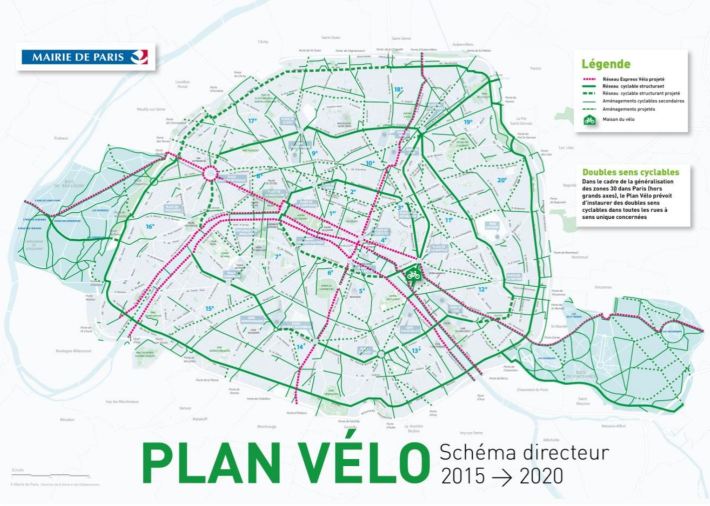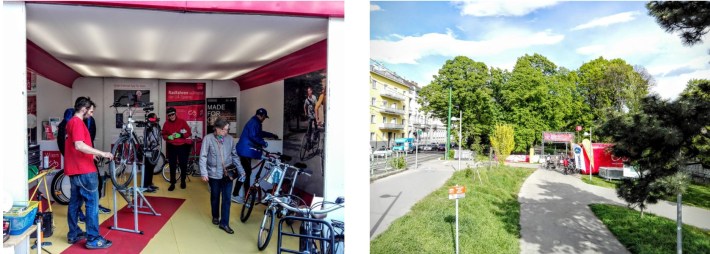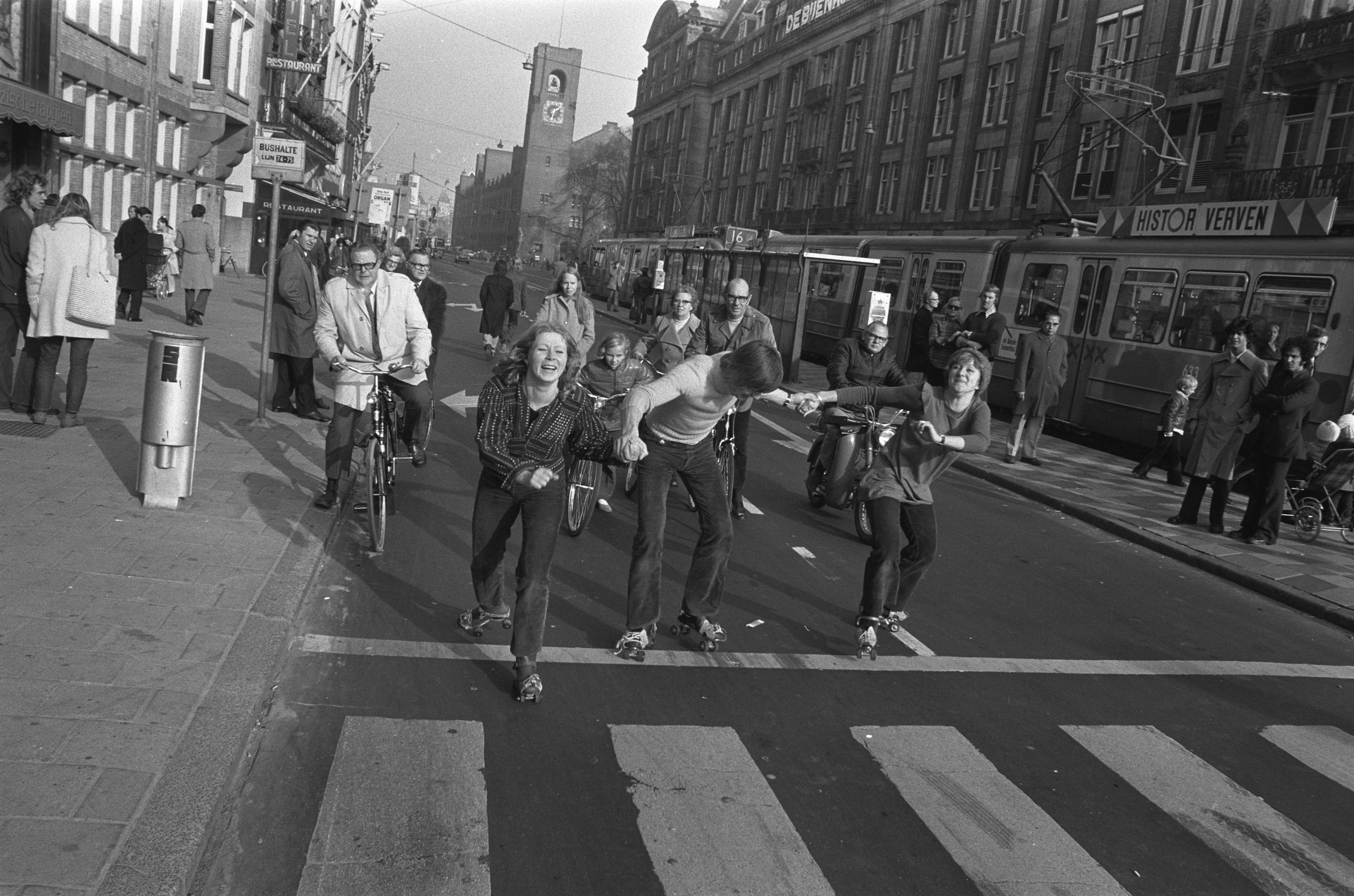
Mayor de Blasio ended his coronavirus-induced open-streets plan after a scant 11 days and has declared that he cannot give more space on now-nearly empty city roads to prevent the crowding of pedestrians and cyclists. But that doesn’t mean urbanists can’t use the crisis to put forward mobility ideas that would both improve public health and lessen air pollution.
In particular, we should build on the gains made by cycling during the crisis. Cycling clearly is seeing a surge, with Citi Bike officials reporting a 67 percent jump in rides for March compared to the same month in 2019. With many businesses closed for all but take-out orders, deliveries cyclists — an essential part of commerce even in normal times — are working overtime ferrying food and medicine.
How can we prioritize cycling — showing it as the workable urban solution to problems created by the crisis that it really is? A number of cities around the world that successfully bolstered biking during earlier crises provide some intriguing lessons.
Car-Free Sundays
Some good ideas, of course, come from the world’s cycling capital — the Netherlands. In 1973, the OPEC oil shock hit Holland hard — so hard that the government called for “Car-Free Sundays” in order to curb gasoline consumption. Every Sunday for three months, Dutch drivers had to leave their cars at home — and people retook the streets, picnicking on the motorways and catalyzing the Dutch cycling culture we know today. Car-Free Sundays opened people’s eyes to how much space in Amsterdam was used for cars, changing the Dutch mindset about mobility and introducing cycling as a viable transportation option.
Why can’t New York City have “Car-Free Sundays”? The city should not only permanently open more residential streets to pedestrians — it should close even more streets temporarily each Sunday, the lightest traffic day in many areas. (After all, the city for years has closed major avenues on Sundays for street fairs). Physical distancing may need to become a prominent feature of our lives for some time (at least until doctors develop a vaccine). “Car-Free Sundays” — with properly distanced family bike rides or strolls — could foster togetherness and community.
A dedicated bike lane on the Queensboro Bridge
The Dutch tried another car-free solution during the transit strikes of 1993, 2005 and 2019, which eliminated the ferries connecting Amsterdam’s northern neighborhood to the city center — a vital link for 80,000 passengers a day. In each of those strikes, Amsterdam turned the IJ Tunnel — a usually car-only, under-river connection — into a bicycle passageway, a quick, low-cost fix that kept thousands of commuters moving. Even habitual motorists had to ride bikes. And — guess what? — the world didn’t end.
There is a major public transport strike today, which means no train, tram, bus, or ferry service across the Netherlands.
— Dutch Cycling Embassy (@Cycling_Embassy) May 28, 2019
To retain timely and efficient access to the city, Amsterdam opened the (previously car-only) IJtunnel to bikes and emergency services.
Video @nsdsk_actueel pic.twitter.com/E3jFXvxcOW
As activists and officials have demanded for years, and Council Member Costa Constantinides reiterated last week, New York City should convert the Queensboro Bridge’s South Outer Roadway (the outermost lane on the bridge’s south side) into a pedestrian path, so that the crowded, dangerous North Outer Roadway, now a shared path, can be converted to a bi-direction bicycle lane. Giving more space to cyclists on the bridge would give essential workers a safe alternative to transit, keep people moving, and serve as a pilot for making this change permanent post-crisis.
An Emergency Bike-Lane Network
During France’s 46-day transit strike last year, many commuters switched to cycling — doubling the number of cyclists and almost equalizing the number of bikes and cars on Parisian roads. Luckily, Mayor Anne Hildago’s ambitious Plan Vélo — which seeks to make Paris 100 percent bicycle friendly by 2024 — had already provided much of the cycling infrastructure. Her most notable efforts include freeing the left bank of the Seine from motor traffic, adding 10,000 bike-parking spots, and completing 37 percent of the promised new bike-lane network.

Even after the strike, the number of cyclists had risen by 131 percent compared to the same period a year earlier. As the City of Lights moves forward with the Vélo plan, the strike served as a test run for the cycling future.
As the Parisians have, New York City should expand its bike-lane network to increase resiliency and use cycling as a tool during times of crisis. How? The city should be taking bicycle counts to observe cycling patterns during the pandemic and use the data to set up a pop-up “emergency bicycle network.” Not simply by filling one or two gaps, as it is doing now, but by a complete network. That doesn’t mean bike lanes on every street; it means looking at where cyclists are riding the most, connecting those routes and prioritizing cyclists on the network.
The “emergency bicycle network” can be used later as a blueprint for transitioning to a permanent main cycling network.
A Hudson River Greenway Bike 'Superhighway'
In 2016, when Vienna began modernizing its metro system, it disrupted the commutes of many workers traveling between the neighborhoods of Hütteldorf and Hietzing. In response, the Vienna Mobility Agency promoted the Wiental cycle path as an alternative route, by improving signage on the route, providing more secured bike parking, and setting up bike service stations that offered perks such as free bike checks, repair services, and bicycle rentals.
The temporary project proved so popular that in just the first few days the facilities were all booked; more had to be added. The move helped grow bike traffic by almost 50 percent, adding 684 more cyclists to the road each day during the closure. The gains stuck: Counts in 2017 showed that cycling on the path had risen by 6 percent compared to the 2015 pre-project numbers. Today, Vienna considers such measures a standard part of its planning toolkit when it needs to shut down parts of transit.

Need to reduce subway crowding? The city should enhance the Hudson River Greenway — already the nation’s busiest cycling path — as an alternative route to north-south subway lines (1, 2, 3, and A, B, C, D) of Manhattan’s West Side and provide more bike parking, bike rentals, and bike service stations along the route. Such an effort would break down barriers to cycling for people who might be trying it out for the first time because of the “new normal” of the coronavirus.
In sum, as the world prepares for a different way of living because of the coronavirus pandemic, the city should use the opportunity to rethink urban mobility and experiment with cycling — taking lessons from cities that have done it. Crises like the coronavirus show how cycling can be a solution. People are already forced to travel in a new way, so let’s get them on a bike. When they do, they just might realize that it’s easier than they thought!
Lauren Rushing (@CycleRush) is a mobility consultant with knowledge and experience in bicycle urbanism in the Netherlands and the United States.






